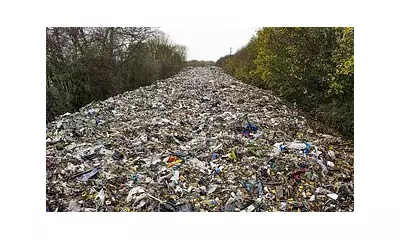
As a severe Arctic blast sends temperatures plummeting across Britain, gardeners are seeking urgent advice to protect their precious crops. Fortunately, a qualified Royal Horticultural Society (RHS) expert has stepped in with a vital guide on overwintering, a key technique to shield plants from freezing conditions and secure an early, bumper harvest next summer.
Essential Overwintering Steps for Key Vegetables
Laura, a food growth educator who runs the Young Growers Club on TikTok, is demystifying the overwintering process in a dedicated online series. The method involves using specific tactics such as relocating plants indoors, applying protective mulch layers, or modifying storage to help vegetables survive the bitter cold.
Onions: Planting and Protection
For overwintering onions, Laura recommends using sets rather than seeds for a summer harvest. She advises creating rows spaced 30 cm apart, with individual onions positioned 10 cm apart within those rows. The pointed end must face upwards, with a small portion protruding from the soil.
Once planted, she strongly suggests netting the onions for a few weeks to protect them from birds. To guard against harsh temperatures, applying a good mulch across the winter is crucial. As an extra precaution, she recommends bringing potted onions indoors to prevent them from becoming waterlogged and rotting.
Broad Beans: For an Early June Harvest
Laura demonstrates how she planted her broad beans in October to target an early June harvest. She emphasises choosing a sunny, sheltered spot and planting in a staggered double row, with holes spaced 6 to 7 inches apart in a zigzag pattern.
This approach allows you to fit more plants in the space and provides mutual support. She advises planting one or two seeds 2 inches deep in each hole. To safeguard the roots during cold spells, a generous mulch of grass clippings is essential, and covering them with fleece may be necessary. In spring, a second mulch is beneficial, and taller varieties may require staking.
Spring Cabbage: Nutritious Soil is Key
While it is now too late to start spring cabbage from seed, those with established plants can prepare them for overwintering. Laura advises selecting a site that gets winter sunshine and has soil high in nutrients, as brassicas are heavy feeders.
Space plants 15 centimetres apart and apply a nitrogen-rich mulch, ideally grass clippings, after planting. Netting the cabbages is also recommended to protect them from pigeons. With a seaweed feed in early spring, the cabbages should be ready for harvesting in May.
Garlic: Two Methods for Success
For growing garlic through the winter, Laura outlines two approaches. Gardeners with adequate space should plant directly in the ground, creating rows with holes every 15 cm and a second row 30 cm away, followed by crucial winter mulching.
For those with limited ground space, using pots at least 15 cm deep is an effective alternative. Position the bulbs 5 cm apart and protect the container from cold weather while ensuring it receives adequate nutrients.
By implementing these expert overwintering strategies now, UK gardeners can actively protect their vegetable patches and look forward to significantly earlier and more plentiful harvests when the warmer weather returns.





